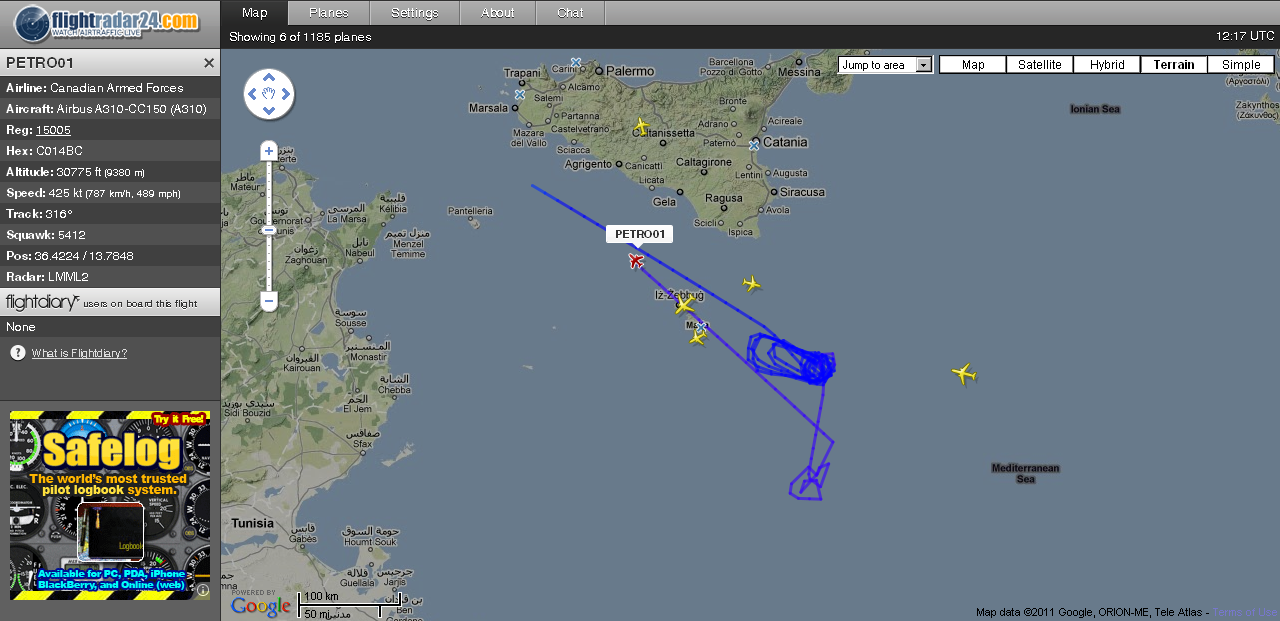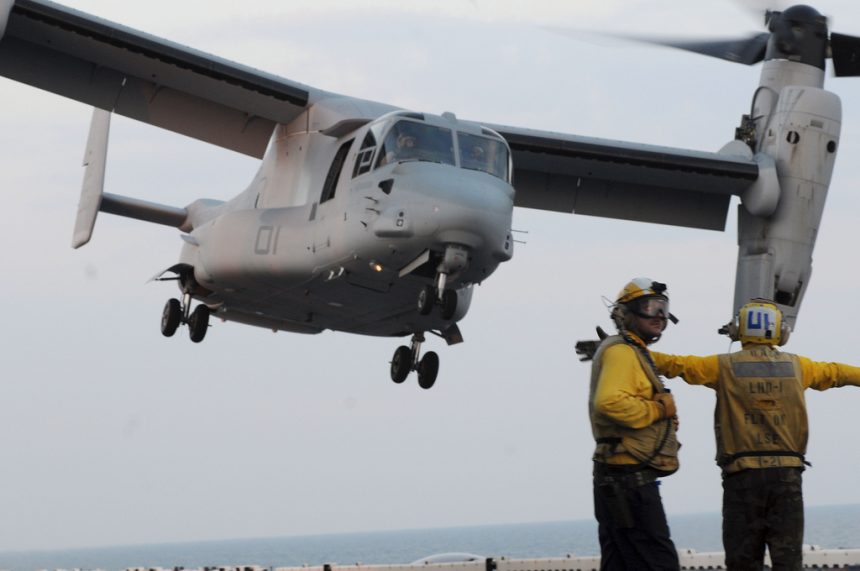Previous debriefings:
Day 4 of Odyssey Dawn opened with the news of the F-15E Strike Eagle (91-0304/LN 492FS) which crashed in Libya during the night approximately 40 kilometres to the east of Benghazi as reported by Daily Telegraph reporter Rob Crilly and his photographer who were the first international journalists to visit the scene
The F-15E crash gives me the opportunity to tell you some more things basing on the following matters of fact: it happened in eastern Libya, it happened at night, a jet plane operating out of Aviano airbase was involved:
First, US and coalition fighters seem to be concentrating on the Gaddafi’s troops in the east; for the moment, besides the fixed targets hit with stand-off armament during Day 1, kinetic presence around Tripoli was considerably less than the one recorded in the Benghazi area. Furthermore, many have noted that there were not significant results against regime’s tanks and artillery around Zintan and Misratah where the coalition was needed to force loyalists back. The reason could be that the airspace in those zones and, generally speaking, in the Tripolitanian area, is not safe enough for allied planes or that target designation in those zones is difficult rendering collateral damages’ risk unaffordable.
Second, the Americans (in the need of keeping a low profile) seem to be more comfortable operating at night. While other coalition contingents concentrate the majority of their combat sorties during the daylight hours, US tactical planes (tacair) mainly operate after dusk as they are perfectly equipped and trained for night combat missions.
Third, while almost all the US support and special ops planes are based in Sigonella the tacair fleet uses the Aviano hub where some 80 fighters are deployed (comprising the resident F-16s of the 31FW). It was a strategic choice: the turboprops are nearer to the Libyan airspace, reducing the transit time to the operative areas, while the fast jets are farther (but able to cover the distance quickly; for instance, transit flight time from forward operating bases to the loitering areas in Afghanistan exceeds the average 1h 30m needed to fly from Aviano to Tripoli).
Other interesting things, information and thoughts:
1) Needless to say an air campaign like Odyssey Dawn is “precious” and somehow it represents an opportunity for both air forces and aircraft manufacturer to show and test their most advanced “hardware” at war in order to give it a sort of “combat proven” certification that can be useful to improve sells (manufacturer) or to ask for more money (air forces) in times when budgets are usually continuosly shrinking. On top of that, in spite of the residual threat to the allied aircraft posed by the mobile SAM stations I’ve discussed in Day 3 debrief, the Libyan No-Fly Zone is going to be a low-lethality scenario, lacking any flying opposition from the LARAF (Libyan Arab Republic Air Force). This means that coalition planes will operate almost undisturbed. So, is there any better chance to advertise your own products than such an air campaign?
For instance, we can’t forget the willingness showed by France on Day 1 to have its aircraft flying over Benghazi. Pictures of armed Rafales taking off from Solenzara were published all around the world in a few hours. And we should neither forget that France is trying to sell the Rafale abroad and was about to sell 10 to 14 Rafale fighters to Libya in 2009 at the end of a long lasting negotiation that seemed to be close to an end in December 2007, when Gaddafi, in Paris, signed an agreement granting six months’ exclusive negotiations for the Rafale. The Rafales expected to be sold to Tripoli were similar to the F3 standard of the French Air Force, multi-role platforms capable of both aerial combat and ground attack. I leave the conclusions to you.
The US are extensively using their RQ-4B Global Hawk UAVs, that operate from their permanent base at Sigonella since Sept. 2010. The Global Hawks of the 9th Operations Group/Detachment 4 of the 9th Reconnaissance Wing based in Beale, similarly to the famous and much older U-2s, are a spy planes equipped with radar and eleptro-optical imagery system which provide the capability to survey some 100,000 square kilometers of terrain a day. Noteworthy, although being remotely-piloted via satellite link, they carry radio equipments that enable pilots working at the ground station to freely talk to the proper Air Traffic Control units as listeners of the LiveATC.net stream discovered on Day 3 night, when a RQ-4B flying at block levels FL500-600 (well above any other “conventional” plane, U-2 excluded) contacted Malta ACC. They use special corridors and dedicated climb/descent areas for proper deconfliction with the other traffic that are advertised by specific NOTAMs.
I don’t know how long the campaign will last but, since many AAR (air-to-air refuelling) assets are required to support large packages of airplanes, I would not be surprised of seeing the Boeing KC-767A recently dellivered to the Italian Air Force attending the operations in the next months. This aircraft is much similar to the KC-46A, the future US tanker whose concept is widely based on the KC-767 Next Gen Tanker a unique refueler equipped with both the boom and “probe and drogue” system hence capable of serving both US and European aircraft. When the No-Fly Zone will be fully active (I mean, with more fighters to enforce it and less bombers) F-22s could be deployed too to give them some more operational experience. Threat posed by the LARAF is worth the expense for such a deployment? Sweden is still considering a contribution to the coalition and according to the Swedish newspapers, a Gripen contingent is already standing by for a possible deployment.
2) Build up and daily ops: Qatar Emiri AF Mirage 2000s and an accompayining C-17 were compelled to perform an emergency landing in Larnaca Cyprus on their way to Solenzara, that should be their forward operating base. A Cyprus Civil Aviation Department official told the Associated Press that high winds forced the two Mirage 2000 and one C-17 cargo aircraft to land for refuelling! Anyway, they should be joined on Mar. 23 by 4 more Mirages and be “up and flying” by the weekend for air policing of the NFZ. On Mar. 22, two Rafales from Charles De Gaulle aircraft carrier flew their first combat sortie over Libya, that was nothing more than an a reconnaissance mission flow with

3) The news of an air-to-air engament near Benghazi between a Libyan airplane and two coalition fighters, which spread among some news agencies, was later confirmed as bogus and denied.
4) Dealing with the Command issue, NATO could assume leadership. U.S. Defense Secretary Robert Gates said: “This isn’t a NATO mission. This is a mission in which the NATO machinery may be used for command and control”.
5) After explaining in the previous analysis which are the tools in the hand of the aircraft enthusiasts and spotters, I’ve asked two combat pilots, an Italian one and an American one, if they were aware of geek things like LiveATC.net and Flightradar24.com respectively used all around the world to listen to the communications between planes and air traffic control, and to track flights using Mode-S trasponders. While the Italian friend
Anyway, during Day 4, by means of flightradar24.com the Canadian CC-150 tanker was once again clearly visible, with its track history giving a clear idea of the racetrack flown during refueling of fighters.











